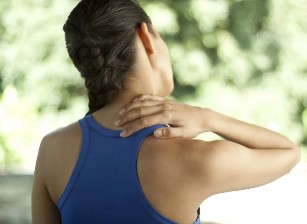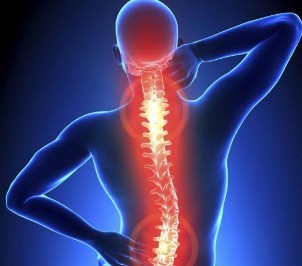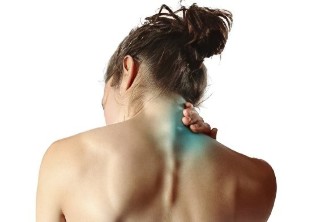Osteochondritis whiplash — represent a progressive disease degenerative-dystrophic changes, intervertebral disc, accompanied by deformation and changing their structures.

The cause of the disease. More to the point, the violation of the body's metabolic processes and, as a result, impaired blood flow to the intervertebral discs. A rare disease occurs as the result of cervical injury spine. Contributed to degenerative disc disease: still lifestyle, poor posture, prolonged a "seat" for the work desk, first, computer, etc.
Osteokondrozis cervical, treatment at the clinic
Cervical degenerative disc disease treatment the methods in the clinic East medicine. Tibetan the methods that are used in the treatment process type – dot massage and herbal medicine etc.., Chinese medicine techniques this, in the first place, acupuncture and it's close. Maybe use a soft manual therapy, osteopathy (including. "kneecap-the Holy technician" represent effects of soft skull bone and soft structure of the method, purpose, method right - back the circulation of cerebrospinal fluid) and other existing techniques doctors clinics.

Cervical degenerative disc disease treatment a spine which is its main area of clinical activity. By a great experience, we can say that we are results in this direction the treatment of this disease (protrusions and hernias including complex spine) is quite satisfactory. Cervical degenerative disc disease treatment is selected are made individually for each patient in a comprehensive manner (process in Antalya, usually in the middle of a few treatment methods, day session – 1-1,5 hours). Cervical pain, usually drawn 70% already after 2-3 therapy session. Degenerative disc disease treatment, on average 5 to 11 session. During the treatment produced the effect of pathological changes and produced in the body disease.
Properties for degenerative disc disease of the cervical spine
Cervical osteokondrozis, comparison breast and waist osteochondrosis, there are a number of features. These properties are determined, the main in a way, properties, structures, vertebrae, cervical, size, bone structure of that's a much smaller size of the vertebrae in the other sections. Cervical - en movable spine, holding her head down, continuously loaded. Low back pain, the most common surprises the most moving segments (with the roots-5 - By-7) - Ayse ultimately determines account, symptoms degenerative disc disease cervical.
The neck is a relatively small volume various vessels and nerve formations, including here goes the vertebral artery, and the blood the materials of the back brain sections - rectangular the brain and the cerebellum. Vertebral artery compression due to the reduction of stenosis may develop as a result of the circulation, ischemia, brain and in case spinae stroke and acute spinal cord could be causing this. Symptoms lesions, vertebral artery - dizziness, poor coordination movement, vision, and hearing.
Because of small compact cervical Nov may cause tension in the spine or offset contraction, nerve endings (nerve compression, cervical) or vascular structures. Aggravate cervical osteophytes resulting in compact conditions time it's a situation.

Cervical protrusion leads to the formation of osteokondrozis hernia and the spine (because of the above Nov tension, the offset of the cervical vertebrae, osteophytes education), the nervous comprimer sport, why swelling and inflammation. As a result, given the small size of the spinal cervical channel, sport, the whole volume of the city, advanced compromised (thanks to the engine already occurs in the vertebral canal). Clinical symptoms this the situation severe pain syndrome.
Osteochondritis may cause stenosis and spinal cord compression, spinal canal, cervical this is more common in the spine, lumbar and more orange. This the fall of the hitting region, not just the neck and head, but the same top (noted that more frequently), and lower extremity. Due to these properties, cervical osteokondrozis usually (compared to lumbar and thoracic) leads to the patient's long-term disability.
In summary, the factors that determine the lists, compression, various vascular a cervical osteochondrosis and nerve structures
- Offset (shift) of the spinal disc - spondylolisthesis. The most minimal lag, because even a small offset the cervical vertebrae causes paralysis, and the most frequent cause of death that is the conclusion.
- The protrusion and hernia the spine - as a result of development, degenerative disc disease, cervical spine and inside the spinal canal guided.
- Osteophytes. As a result, cervical degenerative disc disease on the side bone growth occurs in the spine and joints thanks to tel - osteophyte. Osteophytes on the sides of the vertebrae wire, adjacent disturbing them tone which rises Nov. This increases the overhead of the vertebrae, this leads to an increase pressure of intervertebral disc height this reduces the protrusion increases the risk of intervertebral disc. For a channel goes where osteophytes his vertebral artery, which can cause shortness of breath.
- The fall height of a spinal disc (flattening intervertebral disc)is a frequent cause of root compression reducing intervertebral holes. Also, in this case, if it fails, the return possible subluxation of the cervical vertebrae in the neck, resulting in more compression.

Symptoms of cervical osteokondrozis
Degenerative disc disease symptoms, cervical the spine depends on, first of all, what become the object lesions. Distinguish: radicular syndromes (motor spinal root compression spinal cord, spinal cord ischemia vertebral artery stenosis but why it is broken, blood flow, brain stem, cerebellum, cranial nerve and the inner ear. The following are the most common syndromes.
- Radicular syndrome - cervical sciatica. Comprimer Root to occur (trapped nerve cervical). These symptoms are linked to cervical degenerative disc disease Ile pressed (compression) of nerve root. Pain radiates from the neck down first, the shoulder blade and the forward shoulder, the forearm (outer surface), finger Al. Ravioli can be seen, "run, shivering, tingling forearm, hand and fingers. Also, depending on which cut surprisingly, the symptoms of cervical degenerative disc disease will be different. For example, a great sign that will root when the pasty central nervous and the middle finger, and when the nerve roots of the brachial - ring and small finger (the other symptoms are the same).
- Irritative-reflex syndromes. Symptoms: "burning" there's a neck-nape in a field or a neck (sleep, after a bend, head, sneezing, etc.). Possible irradiation in the shoulders and rib cage.
- Vertebral artery during Cervical osteochondrosis syndrome. Symptoms: throbbing, or "burning" headache, dependency on the nape, temples, step and have the scope on Nov. The pain is usually persistent, paroxysmal, less advanced only found where it was an uncomfortable posture, it's a movement. General weakness the body, nausea, loss of consciousness. That may occur one-sided hearing impairments: noise, reduced visual acuity, vestibular disorders. Patients ischemic heart disease is perhaps ADVERTISING, by pressing the heart of pain. Maybe a reduction in visual acuity, eye pain, etc.
- Cardiac syndrome. Degenerative disc disease the symptoms of this syndrome it's a real stroke of similar symptoms. Suppose, Nov contractions, the area of the heart due to compression the lower segments are in the spinal root of the spine. it's a reflex reaction for her. Cardiac syndrome caused by irritation of the root big chest muscles, or root of the aperture limit, because its fiber go pericardium. Clinical symptoms: pressing the heart of pain. Pain if it continues and may be paroxysmal in a few hours. Reinforced a sharp turn, head, coughing, sneezing. Possible tachycardia, arrhythmia. Coronado sclerosis drugs relieve pain. Cardiogram, during a fire the symptoms of the crisis, disorders of coronary circulation.

































